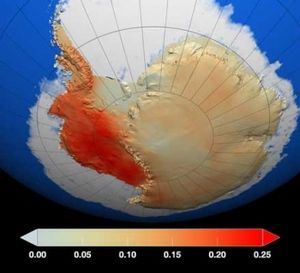Temperature verification (main)
From The Encyclopedia of Earth
(Redirected from Temperature verification (climate change))
Temperature verification

Land temperature increases have been more rapid in Antarctica than other regions of the world.Seemore>
Dave Shindell, NASA-GISS
Dave Shindell, NASA-GISS
-
 Featured Article
Featured Article  Testing Global Climate ModelsIf we are given values for the past, present, and projected future of greenhouse gases, we can derive the total of all climatic forcing factors, and run global climate models... More »
Testing Global Climate ModelsIf we are given values for the past, present, and projected future of greenhouse gases, we can derive the total of all climatic forcing factors, and run global climate models... More »
Recently Updated
 Testing Global Climate Models Last Updated on 2010-12-18 00:00:00 If we are given values for the past, present, and projected future of greenhouse gases, we can derive the total of all climatic forcing factors, and run global climate models (GCMs) to calculate the past, present, and likely future of Earth’s climate. Verifying a GCM involves simulating the climate for some time past and comparing the model’s output with what actually occurred. Discrepancies between a GCM and the climate record indicate problems with the model’s assumptions, algorithms, initial conditions, coordination among various submodels, or even the climate record. Tweaking a GCM to correct for such problems is a fine art because climate involves interactions among many variables that do not exhibit linear behavior. Linear behavior dictates that changes in output be proportional to changes in input. In nonlinear behavior, small changes in conditions may... More »
Testing Global Climate Models Last Updated on 2010-12-18 00:00:00 If we are given values for the past, present, and projected future of greenhouse gases, we can derive the total of all climatic forcing factors, and run global climate models (GCMs) to calculate the past, present, and likely future of Earth’s climate. Verifying a GCM involves simulating the climate for some time past and comparing the model’s output with what actually occurred. Discrepancies between a GCM and the climate record indicate problems with the model’s assumptions, algorithms, initial conditions, coordination among various submodels, or even the climate record. Tweaking a GCM to correct for such problems is a fine art because climate involves interactions among many variables that do not exhibit linear behavior. Linear behavior dictates that changes in output be proportional to changes in input. In nonlinear behavior, small changes in conditions may... More »